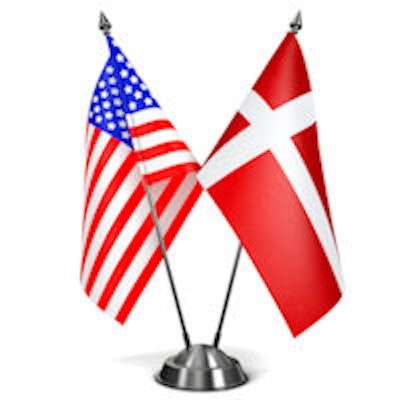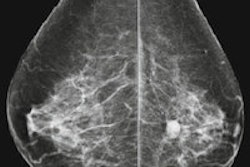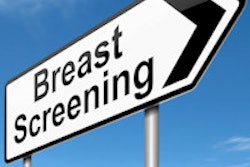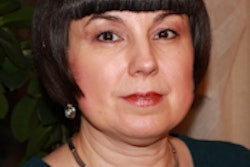
New evidence has shown that women screened for breast cancer in the U.S. were recalled for workup much more frequently than women screened in Denmark, and cancer detection rates also varied significantly.
U.S. and Danish women have about the same probability of having their asymptomatic cancers detected at screening. In the U.S., however, the recall rate on initial screening was 17.6%, compared to recall rates in the 3%-4% range for the two Danish screening programs in the comparison, according to an article published online on 5 May by the International Journal of Cancer.
"While the programs in both the U.S. and Denmark seem to be effective for detecting a high level of asymptomatic cancers, I hope the high recall rates in the U.S. compared with Denmark will stimulate further discussion of routine use of double reading of mammograms, and a need for U.S. radiologists to interpret a higher volume of mammograms per year," lead author Katja Kemp Jacobsen, a PhD student in epidemiology at the Department of Public Health at the University of Copenhagen, told AuntMinnieEurope.com. "This may improve the balance between benefits and harms of screening in the U.S."
The retrospective study began in 2012 and was completed this year. It looked at 2,872,791 screens from the U.S. Breast Cancer Surveillance Consortium (BCSC) and 423,709 screens from Denmark that were conducted between 1996 and 2009.
BCSC data was considered "good," being representative of both current U.S. screening practice and demographics. The Danish data came from Copenhagen and Funen and represented 20% of the Danish women in the target group. The screening programs in these cities are the longest running in Denmark and are the only ones that could allow such a follow-up.
Denmark has organized, population-based mammography screening, and free screening is offered to all women 50-69 years old every two years. Furthermore, the country's population registers allow researchers to follow each woman's screening history and cancer outcomes, and this offers an ideal setting for evaluation of mammography screening programs, according to the authors.
"The interesting thing is that two screening settings with very few similarities detect a similar percentage of asymptomatic cancers, but that the recall rate is considerably higher, and specificity much lower, in the U.S. than in Denmark," Jacobsen noted.
Of the BCSC screens, 1.8% were initial screens. Of the 148,156 screens from Copenhagen, 22.5% were initial screens, while these accounted for 14.7% of Funen's 275,553 screens. More than 80% were film mammograms. Other significant findings were as follows:
| Performance of mammography screening programs, U.S. vs. Denmark | |||
| BCSC U.S. | Denmark/Copenhagen | Denmark/Funen | |
| Sensitivity, initial screening | 91.8% | 90.5% | 92.5% |
| Sensitivity, later screenings | 82.3% | 88% | 86.9% |
| Specificity, initial screening | 83.2% | 96.6% | 97.9% |
| Specificity, later screenings | 91.6% | 98.8% | 99.2% |
| Recall rate, initial screening | 17.6% | 4.3% | 3.1% |
| Recall rate, later screenings | 8.8% | 1.8% | 1.4% |
In other findings, the proportion of small invasive cancers was lower in the U.S. than in Denmark: For biennial screens, it was 27.3% in the U.S., 37.2% in Copenhagen, and 34.1% in Funen. The percentage of ductal carcinoma in situ (DCIS) was higher in the U.S. than in Denmark; for biennial screens, it was 24.5% in the U.S. compared with 17.7% in Copenhagen and 10.7% in Funen. And finally, only one out of 21 women recalled for workup had breast cancer in the U.S., while the equivalent figure was one in three in Denmark
The issue of increased costs associated with a high number of tumor-free women recalled for further workup, as well as increased anxiety for the women involved, should be discussed further, according to the authors. These factors may affect women's general acceptance of screening mammography and their willingness to participate, and this might have a significant impact on the quality and value of any screening program.
In Denmark, radiologists are required to read 5,000 mammograms per year, and in the U.S. the requirement is for 960 every two years. Differences in reading paradigms between the two countries also have an impact on results, the authors stated. Independent double reading, as practiced for the Danish screens, has in prior studies been reported to lower the recall -- and the false-positive -- rates and thereby reduce workup of tumor-free women, they explained.
| Screening mammography in the BCSC (1996-2009) and Denmark (1996-2008) | ||
| BCSC, U.S. | Copenhagen & Funen | |
| Organization | Opportunistic screening (recommendation-based screening) | Organized, population-based screening programs |
| Invitation | Women self-refer or are referred by a healthcare provider | Women are personally invited |
| Target group | ≥ 40 years (American Cancer Society) ≥ 50-74 years old (U.S. Preventive Services Task Force) |
Women 50-69 years old |
| Recommended screening interval | 1-2 years | 2 years |
| Facilities | Screening is performed within a wide range of delivery systems | Screening is performed at two centralized breast clinics, supplemented by a mobile van |
| Recommendation for minimum reading | 960 mammograms per 24 months | 5,000 mammograms per 12 months |
| Reading | Primarily single reading | Independent double reading, with consensus |
| Use of computer-aided detection (CAD) | Yes | No |
The U.S. uses mainly single-reading paradigms and more computer-aided detection (CAD). Furthermore, the underlying medicolegal context in the U.S. characterized by more frequent malpractice lawsuits for missed cancers compared with Europe may predispose radiologists to recall more women for further workup.
Lessons can be learnt from comparisons of national screening programs, which may differ vastly from one country to the next, Jacobsen added. "Such international comparisons of performance, based on standardized definition, can truly help to optimize screening program organization."



















